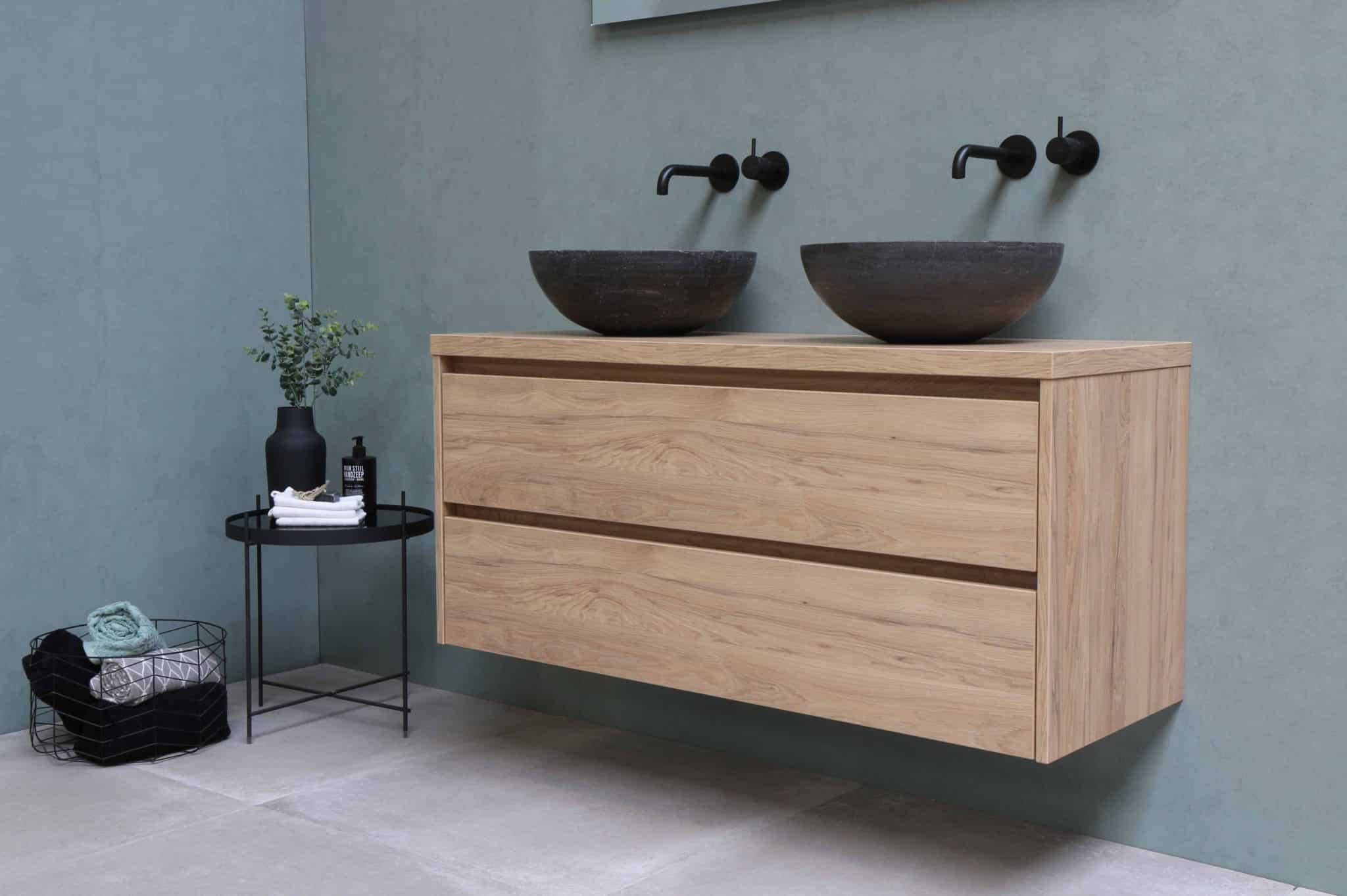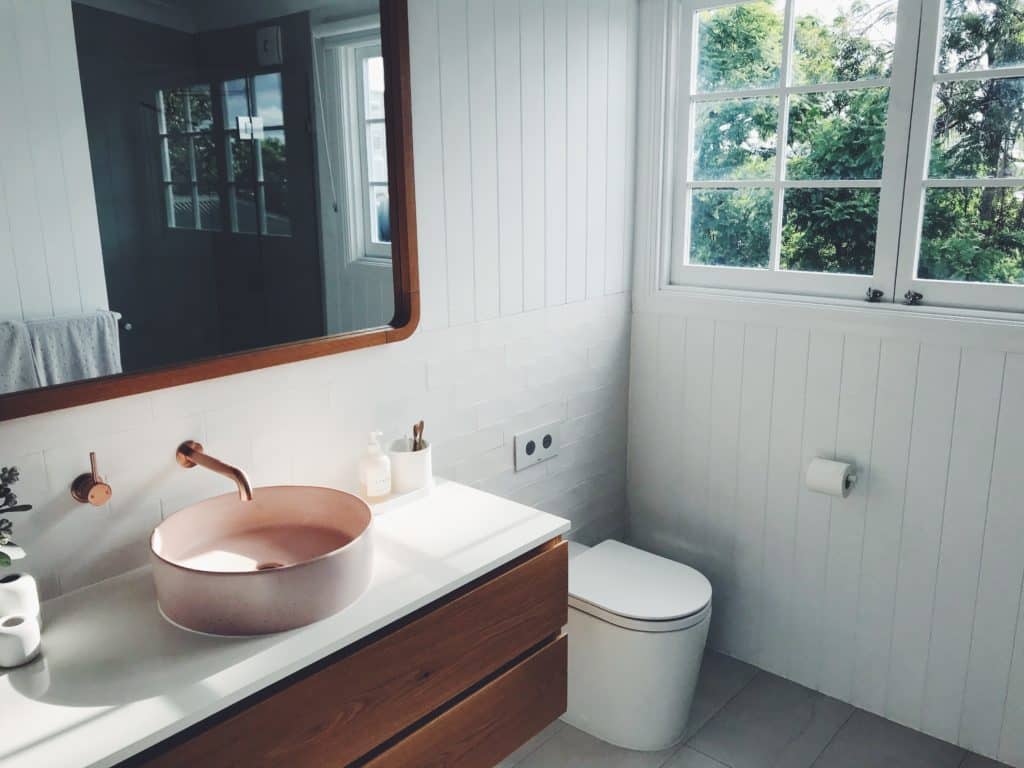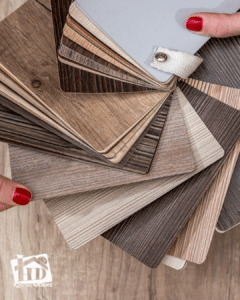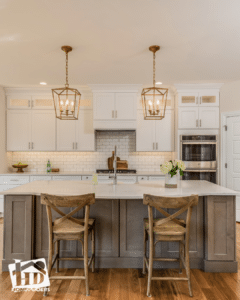Both Scandinavian and Prairie architectural styles boast rich traditions and evoke strong connections to nature. Yet, they manifest their respect for the environment and their aesthetic ideals quite differently. When applied to bathroom designs, these styles speak of the landscapes, cultures, and histories they represent, offering distinctive yet harmonious environments. Here, we will delve into the nuances of both styles, drawing parallels and highlighting contrasts, especially in their applications to bathroom spaces.
Designing a Scandinavian Style Bathroom: Embracing Simplicity and Functionality
The allure of Scandinavian design has not diminished since it first graced international stages in the mid-20th century. Rooted in the basic principles of simplicity, functionality, and a connection to nature, it offers an aesthetic that is both timeless and contemporary. When applied to bathroom spaces, this design philosophy promises a serene, clutter-free, and invigorating environment. Let’s delve into the unique elements of the Scandinavian style and how they can transform your bathroom into a Nordic retreat.
1. The Scandinavian Style Vanity: Minimalist yet Functional
Central to any bathroom is the vanity. In Scandinavian design, less is always more. Choose a vanity that is streamlined, with straight lines and an absence of ornate detailing. The color palette should lean towards muted whites, pale greys, or light wood finishes like pine or ash. But don’t mistake simplicity for a lack of functionality. The Scandinavian style vanity, while sleek in appearance, is designed with efficiency in mind. Features such as soft-close drawers, integrated sinks, and hidden storage compartments maintain a clean appearance without sacrificing practicality.
2. Scandinavian Style Tiles: Neutral and Textured
Scandinavian interiors often play with textures rather than loud colors. This principle is extended to the choice of tiles for the bathroom. Opt for matte finish tiles in soft hues of white, grey, beige, or muted blues and greens. You might consider adding a touch of contrast with black or dark gray tiles for accents. Textured tiles, reminiscent of natural stone or wood grains, can introduce a tactile dimension to the space. Remember, the aim is to evoke feelings of calmness and connection with nature.
3. Lighting in the Scandinavian Bathroom: Bright and Airy
Light plays a pivotal role in Scandinavian interiors, a nod to the long, dark winters of the Nordic regions. Bathrooms, in particular, should be drenched in as much natural light as possible. Large windows, preferably frosted for privacy, are ideal. For artificial lighting, opt for fixtures that offer clean lines and a modern aesthetic. Pendant lights with translucent glass or metal shades can provide a focused light over vanities. Recessed ceiling lights or LED strips under cabinets are excellent choices for ambient lighting. To infuse warmth, consider adding a few wall sconces with a soft glow. Always choose lights with a neutral or cool color temperature to keep the space feeling fresh and open.
4. Scandinavian Decor: Nature-Inspired Accessories
The beauty of Scandinavian design often lies in its thoughtful decor choices. Rather than cluttering the space with numerous ornate pieces, choose a few nature-inspired accessories to accentuate the bathroom. House plants like ferns or ivy can bring in a touch of green and foster a sense of tranquility. Wooden accessories, like soap dispensers, toothbrush holders, or bath mats, can add a rustic charm. Woven baskets can provide functional storage while also enhancing the room’s aesthetic. Textiles, such as cotton bath towels or linen curtains, in neutral shades, can add layers of texture and warmth. Every accessory should resonate with the overarching theme of nature, simplicity, and purposefulness.
Designing a Prairie Style Bathroom: The Intersection of Nature and Architecture
The Prairie School, an architectural movement rooted in the American Midwest, draws its inspiration from the expansive and flat landscapes characteristic of the region. Pioneered by architects like Frank Lloyd Wright, this style is marked by horizontal lines, flat or hipped roofs, and a strong emphasis on craftsmanship and organic materials. When incorporated into bathroom design, Prairie style speaks of a harmonious blend between the structure and its natural surroundings. Let’s explore the nuances of this architectural movement and discover how you can infuse its essence into your bathroom design.
1. The Prairie Style Vanity: Craftsmanship Meets Function
At the heart of any Prairie-inspired bathroom lies the vanity, a testament to the movement’s emphasis on handcrafted, functional designs. When choosing a prairie style vanity, look for pieces with horizontal lines, preferably made from natural woods like oak or cherry. The use of natural materials celebrates the connection between the indoors and the vast natural landscapes outdoors. The design should evoke simplicity but not at the expense of functionality. Ample storage, seamlessly integrated into the design, ensures that while the space remains clutter-free, every utility has its dedicated spot.
2. Prairie Style Tiles: Earthy and Geometric
Reflecting the earthy hues of the prairies, the tile choice for a Prairie style bathroom should be dominated by tones like browns, tans, soft greens, and muted blues. Consider tiles that mimic the textures of natural stone or terracotta, grounding the bathroom in its natural surroundings. Geometric patterns, especially those emphasizing horizontal lines or angular designs, can capture the Prairie style’s essence. For instance, a backsplash with linear mosaic tiles or a floor with interlocking geometric shapes can serve as focal points in the space.
3. Lighting in the Prairie Bathroom: Organic and Ambient
True to the Prairie School’s principles, lighting should accentuate the connection to nature while providing warmth and functionality. Opt for fixtures made of materials like stained glass, bronze, or wood, with designs that showcase horizontal lines or geometric patterns. Pendant lights with earth-toned stained glass panels can cast a soft, diffused glow, reminiscent of the setting sun over a vast prairie landscape. For task lighting, especially around the vanity, look for fixtures that continue the theme of handcraftsmanship, with materials and designs that evoke nature. Whenever possible, allow for an abundance of natural light through clear or frosted windows, emphasizing the seamless transition between the indoors and outdoors.
4. Prairie Decor: Natural Accents and Handmade Artistry
Prairie decor, much like the architectural style it represents, is a celebration of nature and hand craftsmanship. Natural elements should be at the forefront — think of wooden towel racks, stone soap dishes, or ceramic vases. Handmade artistry can be introduced through woven baskets for storage, hand-painted ceramic tiles, or custom wooden shelves. Consider adding artwork or prints that capture the expansive prairie landscapes or abstract interpretations of its characteristic horizontal lines. Plants, especially those native to prairie regions, can breathe life into the space. Grasses, succulents, or small potted trees can serve as reminders of the vast, open landscapes that define the Prairie style.
Scandinavian vs. Prairie Bathrooms: Highlights contrasting their Nature-Inspired Design
1. Vanities: The Fusion of Function and Aesthetic
- Scandinavian Style Vanity: Known for its minimalist and functional approach, Scandinavian design opts for vanities with sleek, straight lines, devoid of excessive detail. Soft hues like whites, pale greys, or light wood finishes dominate, and the focus remains on efficiency, with features like integrated sinks and hidden storage.
- Prairie Style Vanity: The Prairie style emphasizes craftsmanship. Vanities, often made of woods like oak or cherry, feature horizontal lines to reflect the vastness of the prairie landscapes. Natural materials are paramount, connecting the indoors with the expansive outdoors.
2. Tiles: Textures and Colors Inspired by Nature
- Scandinavian Style Tiles: The focus here is on muted textures over loud colors. Matte finish tiles in soft shades like white, grey, beige, or even muted blues and greens are popular. Contrasts might be introduced with black or dark gray tiles.
- Prairie Style Tiles: These draw inspiration from earthy hues of the prairies. Browns, tans, soft greens, and muted blues dominate the palette. There’s also an emphasis on geometric patterns, with tiles reflecting textures of natural stone or terracotta, grounding the bathroom in its surroundings.
3. Lighting: The Interplay of Brightness and Warmth
- Scandinavian Bathroom Lighting: This style prioritizes brightness and freshness. The aim is to fill the space with as much natural light as possible, complemented by fixtures with clean lines and a modern aesthetic. The overall lighting gives a cool, fresh ambiance, reminiscent of the clear Nordic skies.
- Prairie Bathroom Lighting: Prairie-inspired lighting seeks to blend with nature, utilizing materials like stained glass, bronze, or wood. Earth-toned stained glass pendant lights or fixtures emphasizing geometric patterns are common. The lighting often exudes warmth, harking back to the setting sun over prairie fields.
4. Decor: Nature-Centric Accents and Craftsmanship
- Scandinavian Decor: The decor leans towards nature-inspired accessories like ferns, ivy, wooden elements, and woven baskets. Everything resonates with simplicity, nature, and purpose.
- Prairie Decor: Here, the focus is on handcrafted and natural elements. Wooden towel racks, stone soap dishes, or handmade tiles are common. Artwork depicting prairie landscapes or abstract representations of its features might adorn the walls.
In Conclusion: Trust in Honey-Doers for Seamless Execution
Both Scandinavian and Prairie styles offer unique interpretations of nature and craftsmanship in their approach to bathroom design. Where Scandinavian design values minimalism and a cool, clean aesthetic, the Prairie style embraces the earthy tones and handmade craftsmanship reminiscent of the American Midwest.
When considering either style for a bathroom design, it’s essential to understand the underlying principles and aesthetics. While both designs prioritize functionality, their interpretations of nature, materials, and decor elements differ. Whether you’re drawn to the minimalist, icy beauty of Scandinavia or the handcrafted, warm earthiness of the Prairie style, your bathroom can become a sanctuary that reflects these unique architectural traditions.
To perfectly capture the essence of these styles and ensure impeccable execution, consider partnering with a contractor like Honey-Doers, experienced in turning such design visions into reality. With their expertise, you can beautifully integrate either of these aesthetics into your bathroom space, ensuring both functionality and style.





